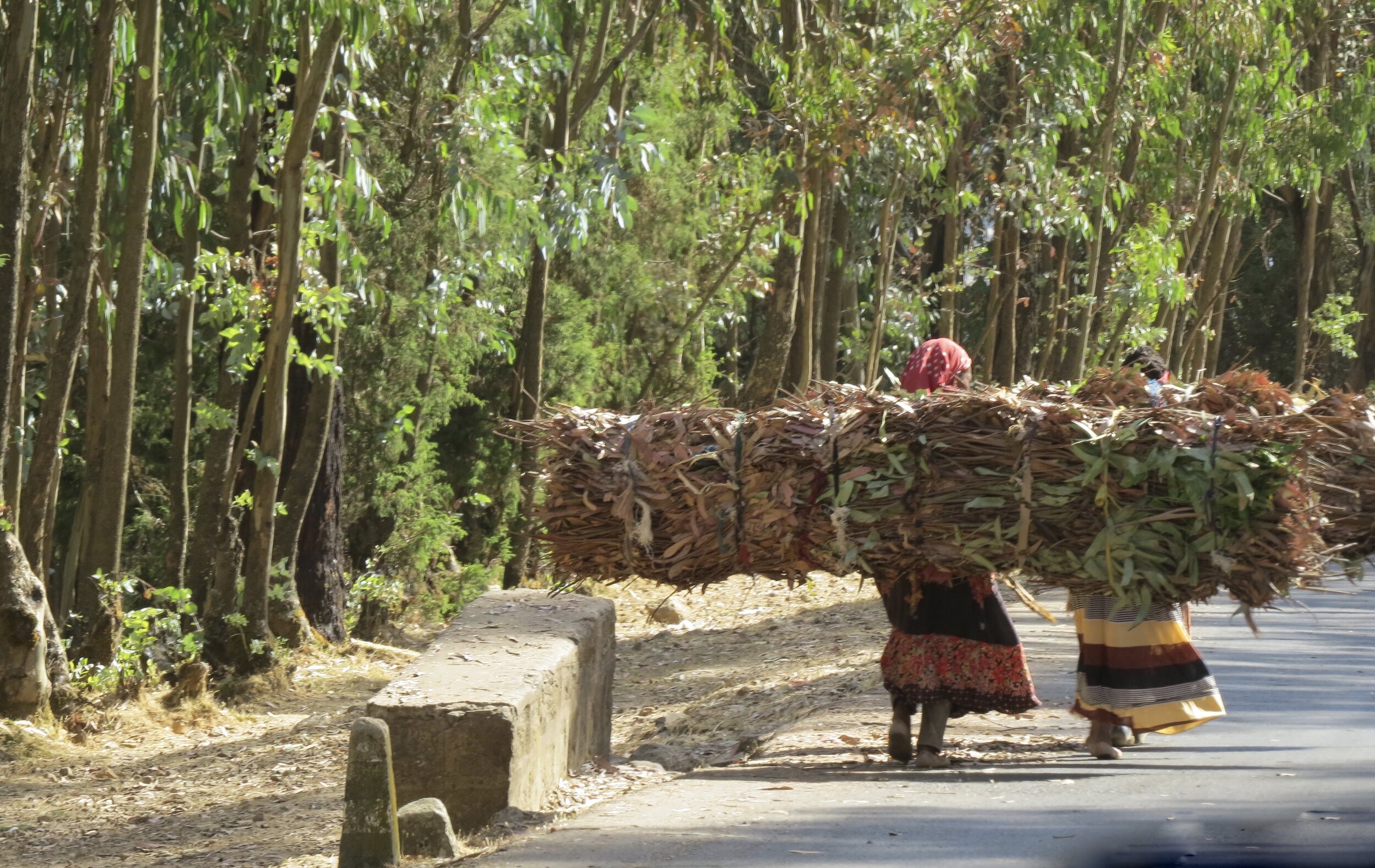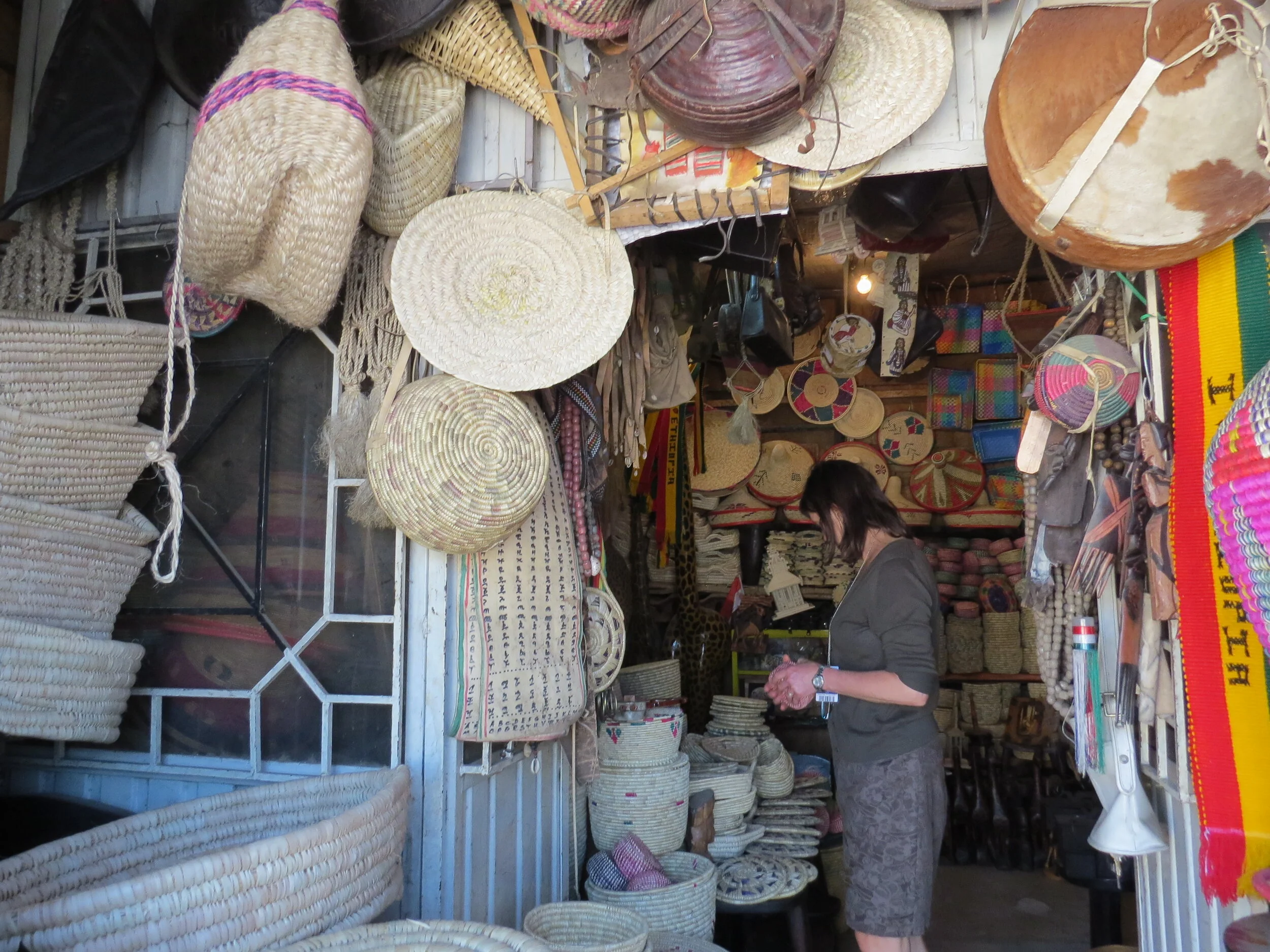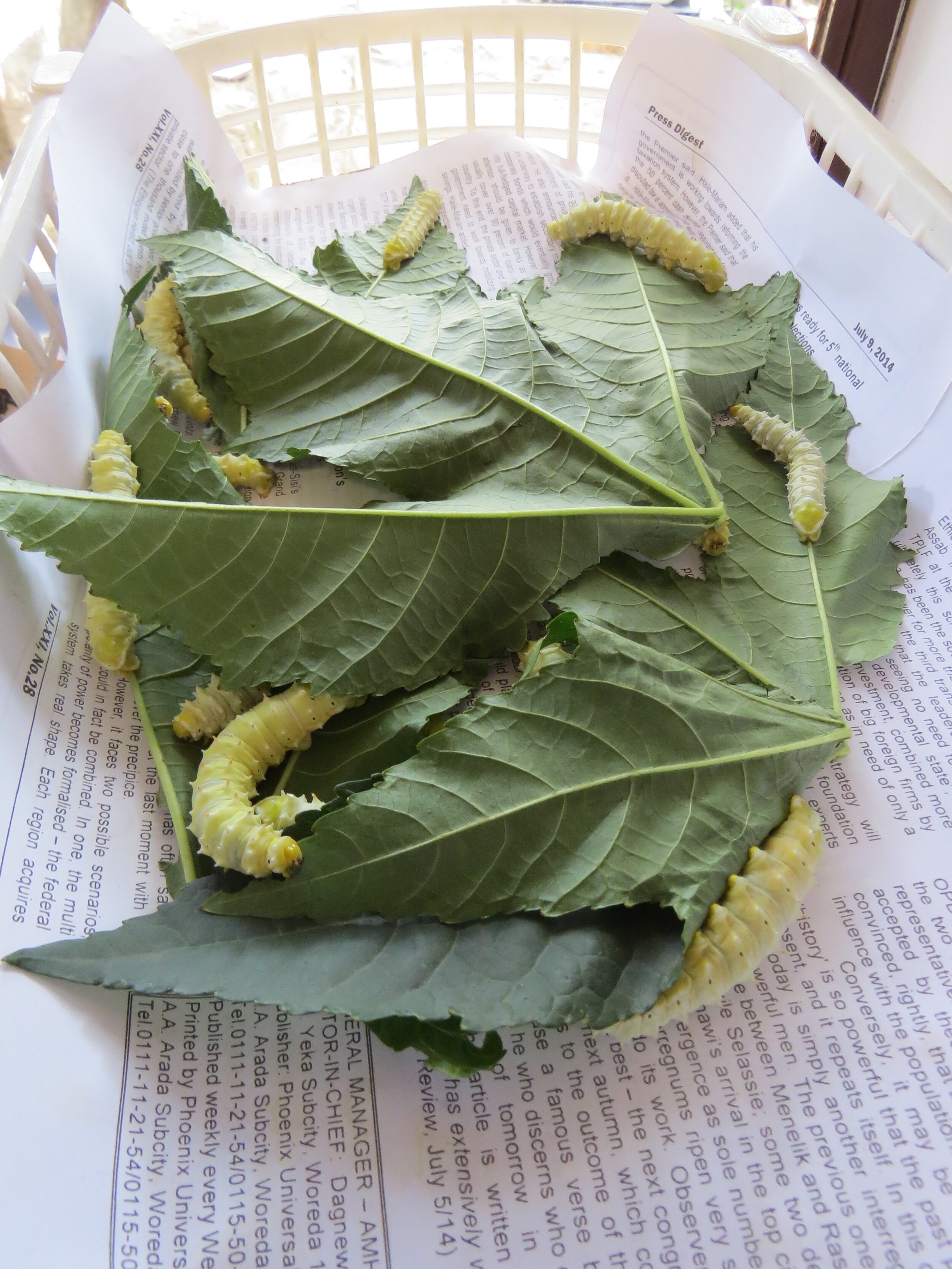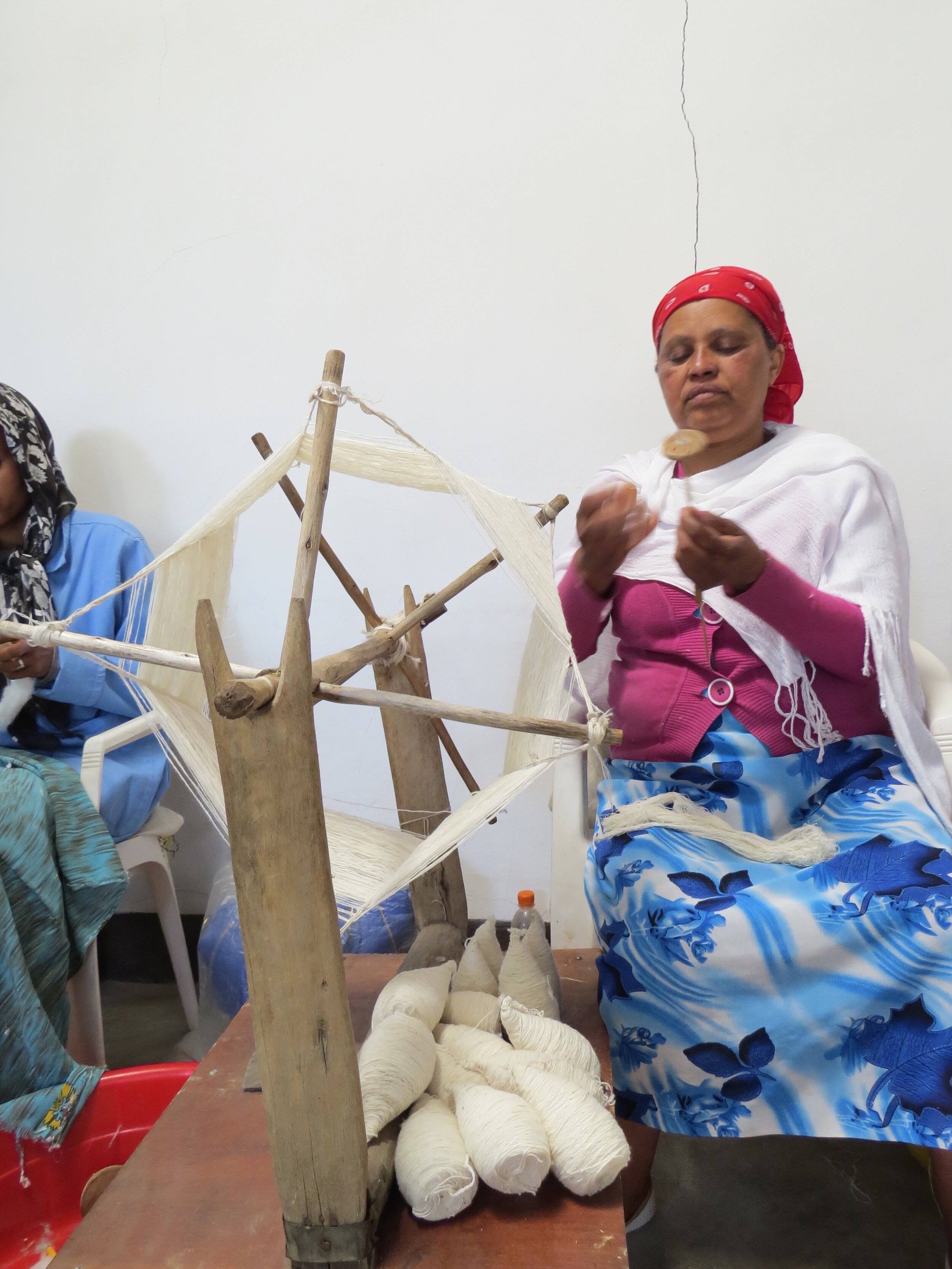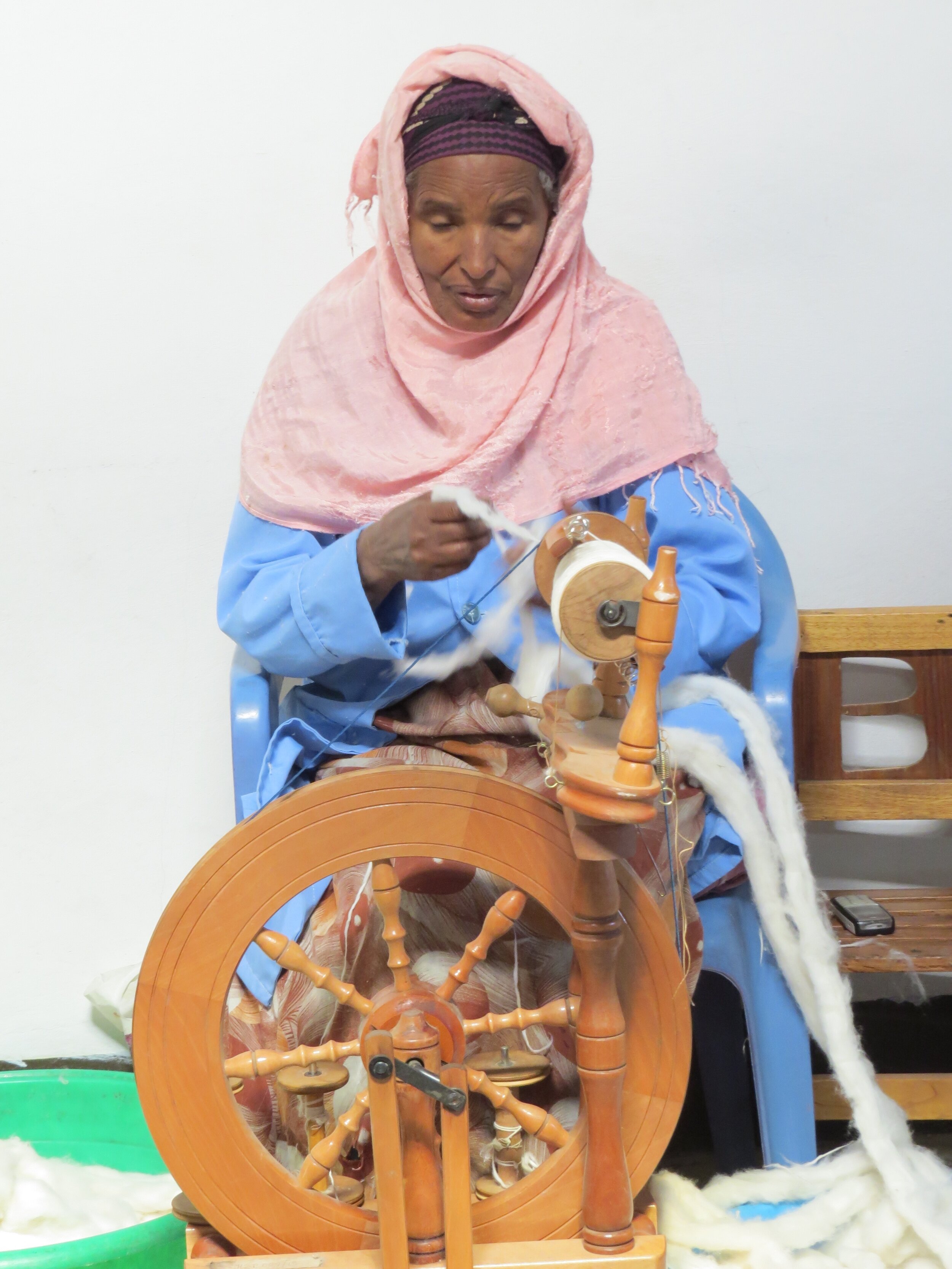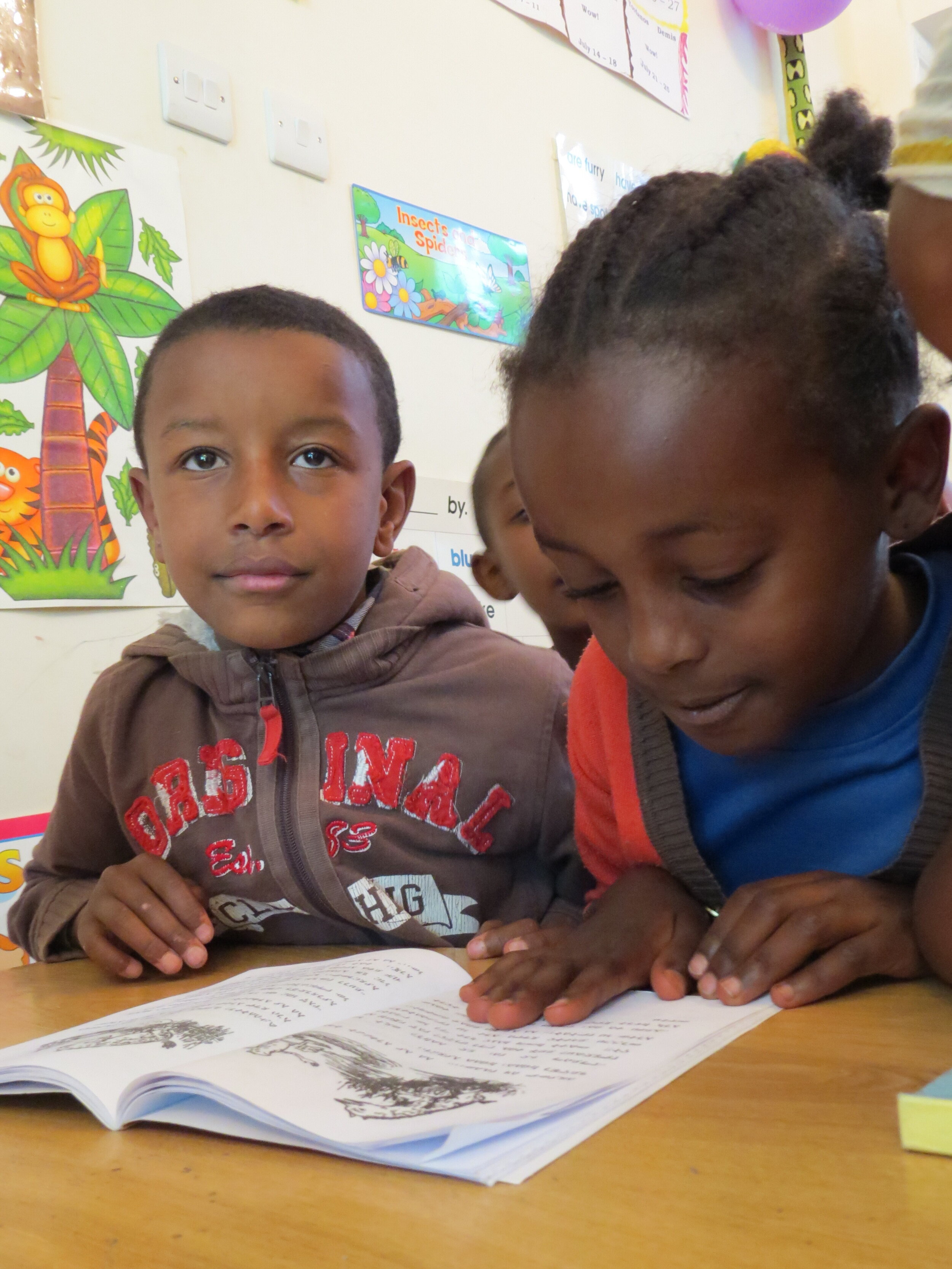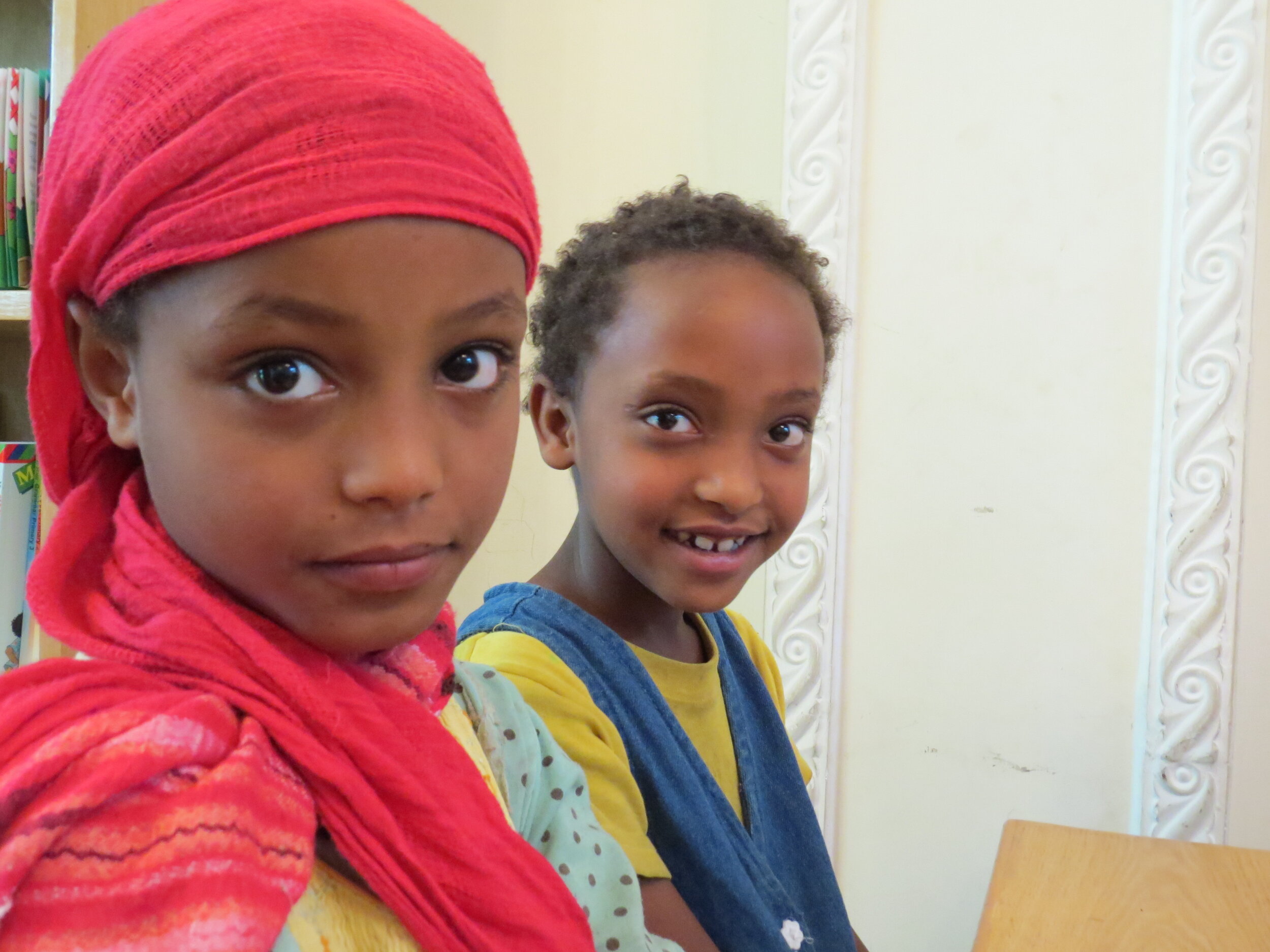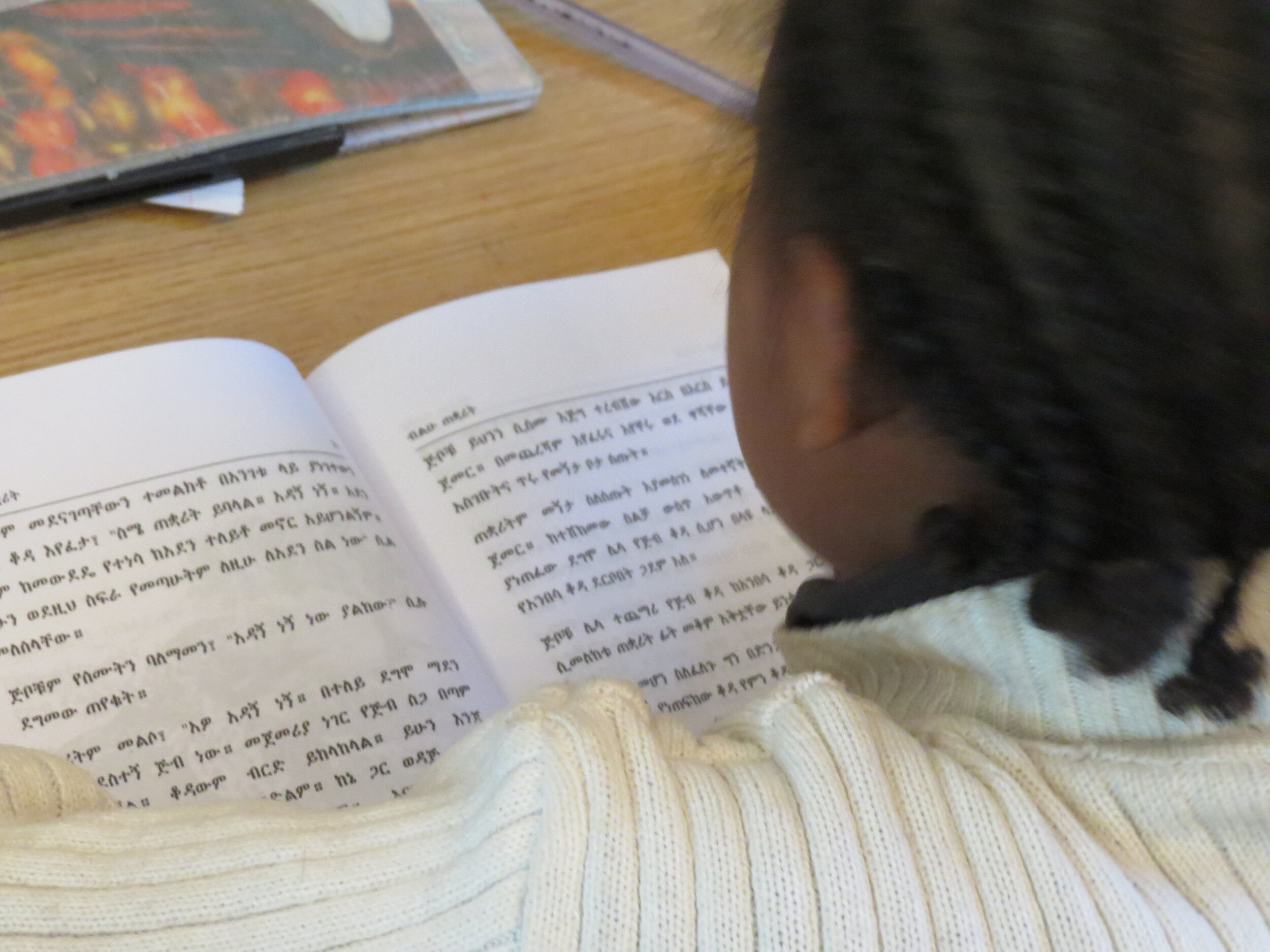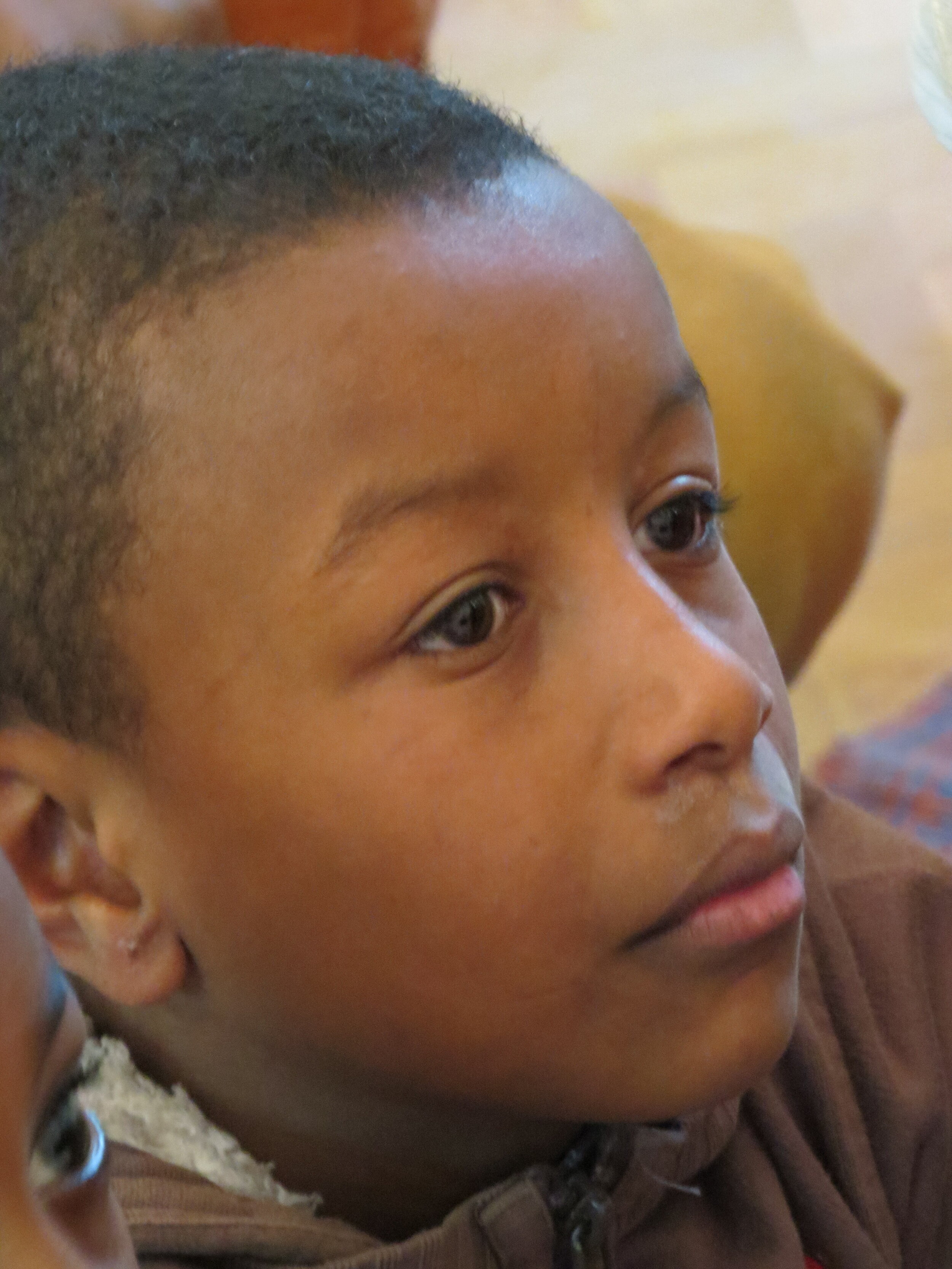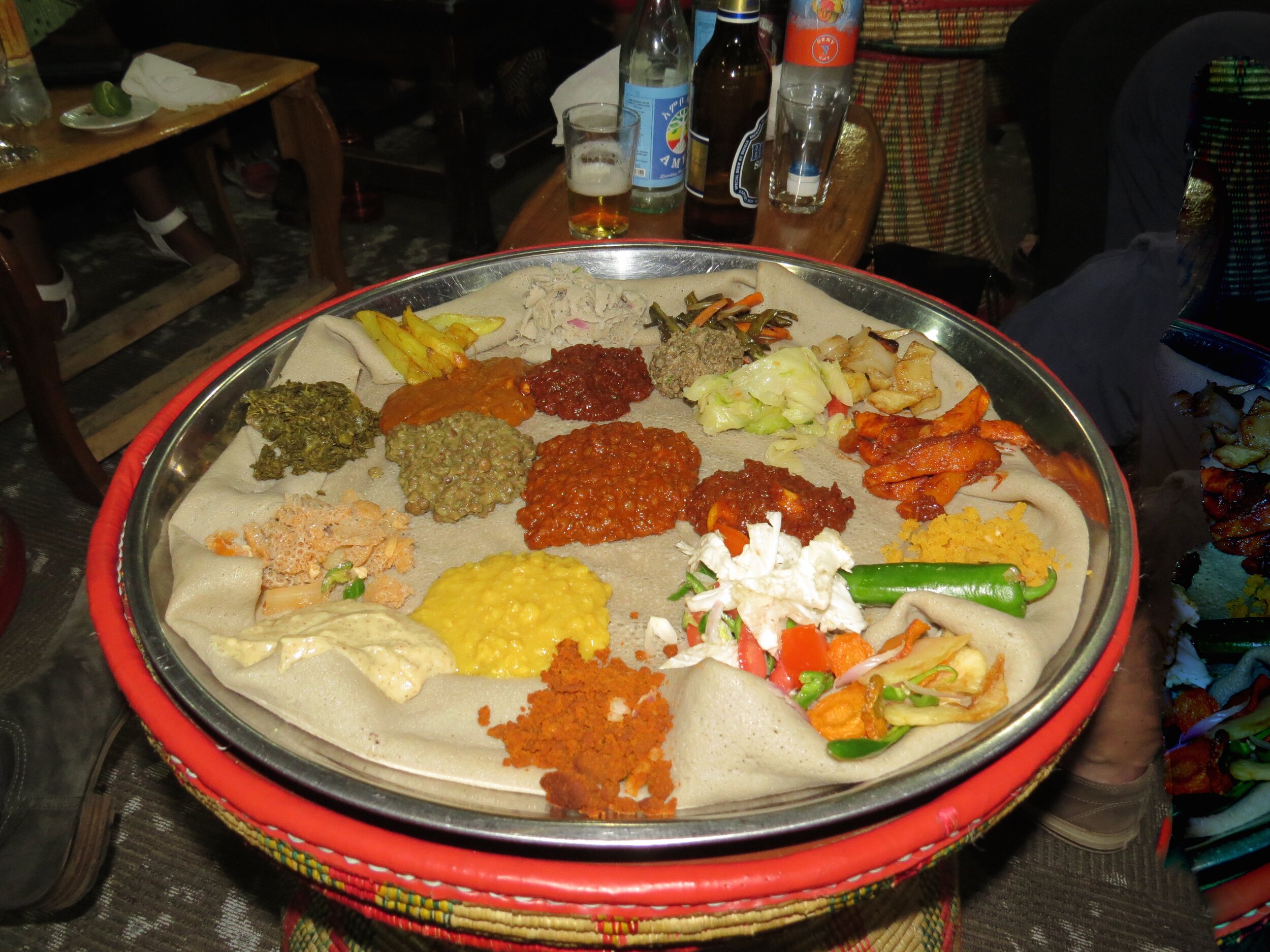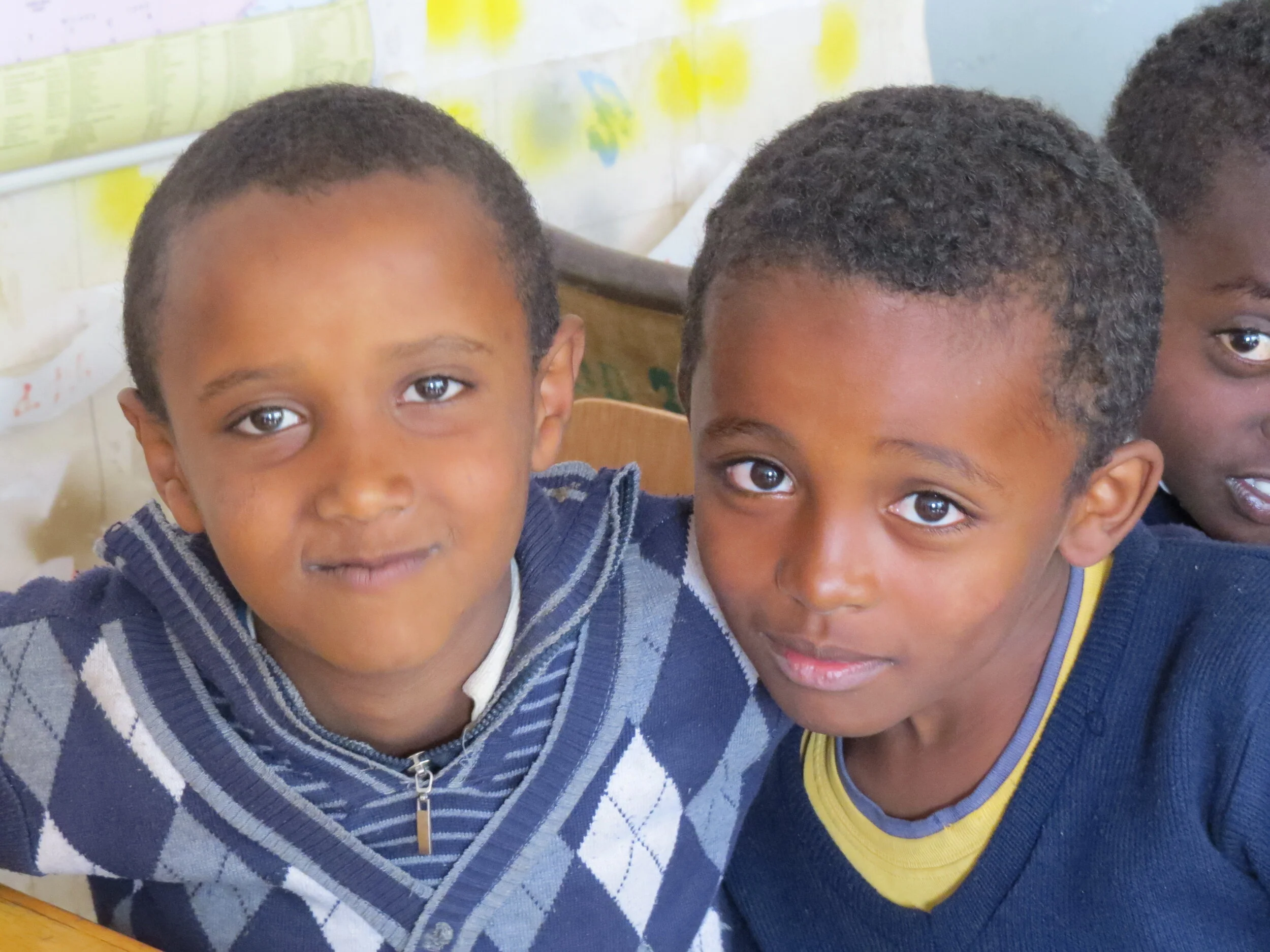Several international schools in different African countries invited me to come. The librarians and I managed to plan a schedule that worked for the schools and for travel logistics across Africa. Besides working in the schools, I was very much looking forward to seeing a bit of Ethiopia. I knew I would have adventures and learn new things. I didn’t know just how much I didn’t know about this fascinating, unusual country.
Traveling to a place I have never been to, is a bit like taking a blank new colouring picture. The black outlines are there but nothing else. You can colour it in any way you like... When I go to a country I have an idea of its outline. But the colours come once I see it for myself. Once I get to meet people, taste food, smell spices and flowers, see the landscape - then the outlines takes shape and transform themselves into the real picture.
Did you know that Ethiopia’s language is called Amharic?
It’s currency is called birr.
More than 70% of Africa's mountains are found in Ethiopia. Probably due to the country’s high altitude, Ethiopians are famous for being great long distance runners. Does the name Abebe Bikila ring a distant bell? He won gold in the 1960 Olympics when running the marathon. Barefooted. The female coach at the school where I’m speaking is a former Olympic athlete.
I didn’t know that Ethiopia is one of only nations in Africa never to be colonized. It has been occupied by Italy and the Soviet Union but not colonized. I found lingering traces of both those nations here: mostly Italian food and the orthodox religion.
I flew into Addis Ababa, the capital city with almost 5 million people, at an elevation of over 2,300 meters. Surrounded by volcanic summits it is on the edge of the Rift Valley where Lucy, the oldest (3.5 million years old) human bones were found. And here’s a fun tidbit that might help you win Jeopardy some day… She was named ‘Lucy’ because the archaeologists were listening to ‘Lucy in the Sky With Diamonds’ that night.
You want another fun fact?
Addis Ababa means ‘new flower’. When Empress Taitu first came to the area of what is now the capital city of Ethiopia, she noticed lovely yellow flowers which she had not seen before. This new flower was mimosa, or ‘Addis Ababa’ in Amharic.
Addis Ababa
My hotel is right downtown. I get picked up early each morning to go to school and, after school, I prefer to walk back so I can see more. As we drive through Addis Ababa I don’t have enough eyes to take it all in. I can spot only one skyscraper but many buildings of 5 or 6 stories - several of them in various stages of construction, showing bamboo scaffolding and unfinished concrete floors. Some buildings have shiny glass and chrome, other seem sad leftovers from a Soviet era.
The road is meant to be 2 lanes, but cars at least 4 abreast try to navigate in the same direction, dodging pedestrians, dogs and piles of gravel. The sidewalks are broken and dusty. Women in clean white shawls scurry along, baskets on their heads. Children in impeccably clean clothes, carrying backpacks, are on their way to school. Schooling is free, all the way through high school, although only those who can afford a school uniform can go.
Among modern buildings, tiny shacks of plywood and corrugated sheet metal lean drunkenly shoulder to shoulder. It resembles a deck of cards. If you move one card, they all might come tumbling down.
Along the main road, a cluster of twenty goats await their sale. When you buy one, you take it home by either slinging the live goat across your shoulders, leading him on a rope or simply tying him to your car roof.
Men pile tomatoes on wooden wheelbarrows. Shopkeepers squat outside their stores. Their products dangle outside from roof to floor: plastic baskets, flip flops, shirts, bananas and much, much more.
Cars of world wide NGO’s push their way along the road, together with beat-up blue taxis, brand new Landcruisers and mopeds.
Young men cut boxes, fold open the cardboard and use it to set up their shoe polishing stand. Many people have their shoes polished, here on the dusty streets.
I spot women in long flowing skirts, wrapped in white shawls; men wearing a fez, or a baseball cap. Donkeys wait patiently with loads of cement bags and bricks.
Men in crisp soccer shirts play a game of soccer. A straight, long queue of people quietly waits for a bus - no pushing or shoving. Security guards at stores, banks, hotels - spend 12 hour shifts sitting on a plastic chair, chatting with passerby’s or reading a newspaper. A salesman carries a bundle of mops over one shoulder, the wispy white strands of fabric waving as he walks along. I spot 6 large dogs peacefully sleeping on a pile of rubble.
A Muslim in long white robes rubs elbows with an Orthodox Ethiopian. About 32% of Ethiopians is Muslim and just over half the population is Orthodox. Most Ethiopians fast for 100 days of the year (!) including each Wednesday and Friday. When they fast they don’t eat any dairy products, meat or sweets. Perhaps this is why so many people here are slender. Maybe North America should adopt this practise…
Slowly the sun climbs in the sky and starts to warm the sidewalks. Addis Ababa is awake, although I don’t think it ever slept.
Chickens and coffee, somewhere on a street.
Suddenly our driver turns onto a dirt road and honks at a gate. A wizened old man, hands like gnarled wood, opens the gate and we park in the shade in a little oasis. Among stone paths and lush green vegetation are various low buildings. We have come to Sabahar, a workshop of weavers and spinners, initiated by a Canadian. Inspired by ancient weaving traditions of Ethiopia, Sabahar creates exquisite scarves, table clothes, blankets and more using locally produced silk and cotton. Ethiopian women have been spinning cotton on drop spindles for centuries while men have been weaving fabrics for traditional clothing as well as the famous Ethiopian ‘gabi’ blankets. The company buys Eri silk cocoons from rural farmers, often women. The Eri silk worm eats castor plants, which are environmentally friendly plants that grow all over Ethiopia. Raising silk worms is done to supplement income and primarily managed by women. The silk produced by the worms is then hand spun, a craft that has been passed down from mother to daughter for generations.
The silk thread is dyed in natural dyes, producing richly coloured fabrics. The dyeing process, too, is ancient but often forgotten. Sabahar helps to preserve these traditional skills. They experiment with flowers, leaves, bark and roots to create gorgeous colours. They even use coffee, tea and flowers to dye the thread. The thread is woven on traditional looms, in an age-old technique passed down from father to son. I watched as the men skillfully slid the trundle and thread through the silk lines, creating patterns as they moved the loom. Smiles all around as they take pride in their skills and in the final products, that can be bought in a small shop.
Sabahar not only helps to preserve skills, they enable artisans to work and receive fair wages. The company emphasizes its philosophy of respectful, ethical and sustainable work opportunities for artisans in Ethiopia. If you visit their website you can see their gorgeous woven scarves and more, and you can even buy them, in the US, Canada, in Europe, and countries around the world.
And, yes, I did buy some weavings when I was there.
One day after school we visit a project from Ethiopia Reads. This fabulous grassroots organization puts books into the hands of children who desperately need them. They have established school libraries, after school programs and mobile libraries. You might have seen Johannes and his camel library on the cover of Goodkeeping magazine. This is a vital service here and they really do make a difference. Ethiopia Reads is now also producing books in Amharic. The librarian from the international school and I both read books to the children, we chat to leaders and the school is now fostering local teachers and supporting them with literacy projects.
A wonderful group of teachers took me out for a traditional Ethiopian dinner one night. What an experience! We all sat in a large room, adjoined by Ethiopian families with children in all sizes. The small tables were like woven baskets with beautiful designs and a round, wooden table top.
Before eating, a waiter came by with an large tin jug of water, soap and a basin that catches the waste water. He offered this to each of us to wash our hands. An important move since the entire meal is eaten with the right hand.
Injera with toppings looks like a painter’s palette.
A large round platter of food was placed on each small table - serving 3 or 4 people. There was injera, a very thin rolled up ‘bread’ that looks exactly like a tea towel, and is just as soft and pliable. You use your right hand to pull off a piece and then you use the injera to pick up a little bit of food.
There was minced beef with capers; Gomen Kitfo (local cabbage with cottage cheese), zemamujet (cheese with cabbage), kocho (bread wrapped in banana leaf), gored gored (beef), yellow peas mashed with meat and more.
Much of it was very spicy, other dishes were smooth and mild. I think I tried them all. And I did need my lemon flavoured Ambo to put out a fire once in awhile…
While we ate, young men and women played interesting instruments on a stage and danced… and danced… and danced. I don’t know how they kept going all night. Using head and shoulder movements, they kicked up a storm showing us traditional dances, some with spears, from around Ethiopia, including this bizarre head twirling dance that makes you sick just watching it. You can watch it here: https://www.youtube.com/watch?v=tmyf__yc5ZQ
After eating, we all washed hands again and were served Ethiopian coffee - the beans roasted right there and ground by hand with a pestle, served with fresh pop corn and plenty of incense - the smell of coffee mingled with that of the frankincense sprinkled liberally on glowing coals in small stone pots on each table.
For more on Sabahar (like where to buy), on Ethiopia Reads and about the restaurants, check out:
https://www.ethiopiareads.org/projects/libraries/
https://www.facebook.com/Dimma-Cultural-Restaurant-311943692156629/
Welcome sign in Amharic
Click here for BOOKS about Ethiopia
Next time: Time For Coffee: Ethiopia’s exceptional coffee ceremonies, the calendar and it’s very own time structure.


